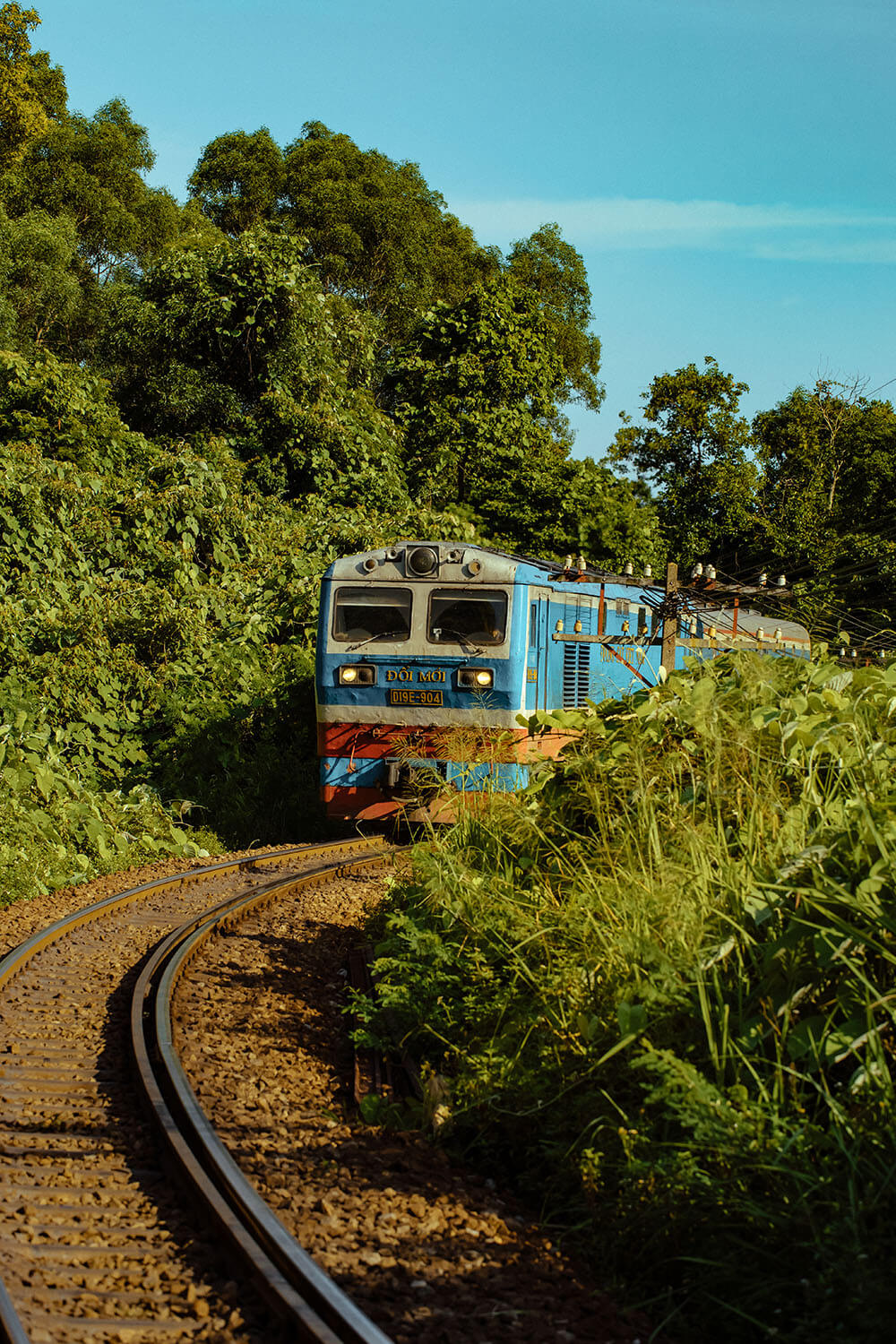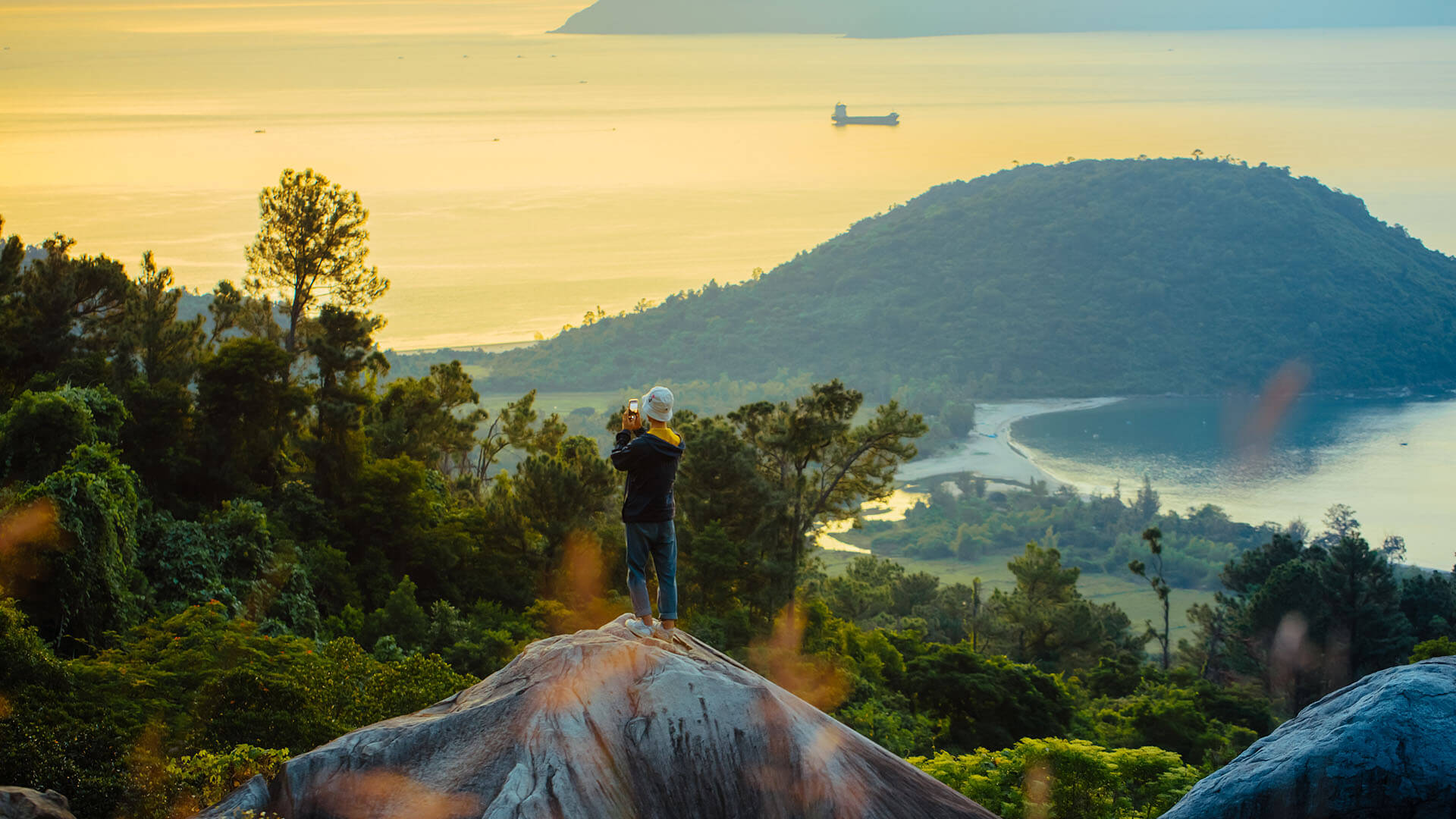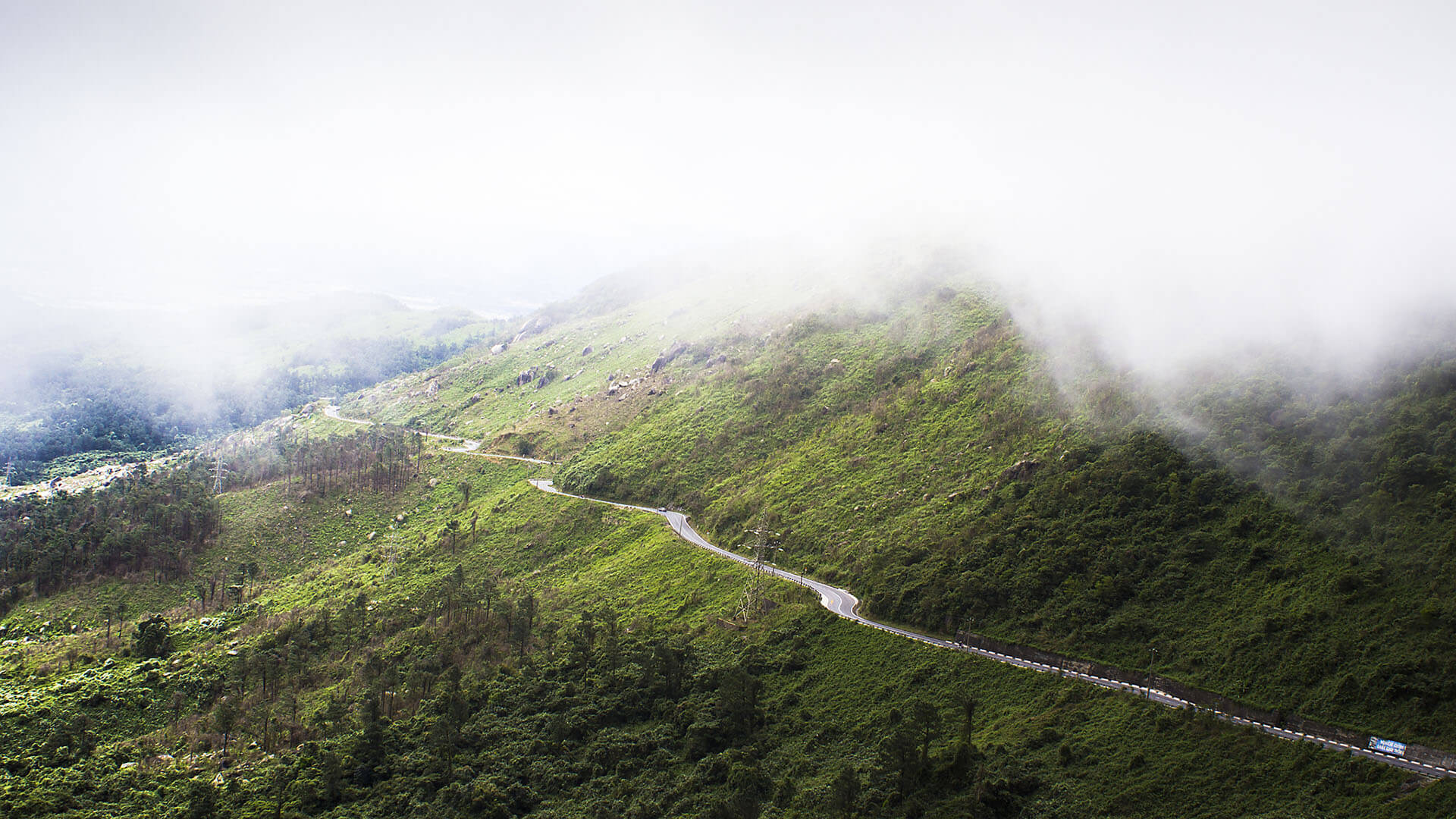Hai Van Pass is one of the most beautiful and renowned coastal mountain passes in Vietnam, located on the Bach Ma range (a part of the Truong Son range) in Central Vietnam. The pass lies between Da Nang City and Thua Thien Hue Province, about 20 km north of downtown Da Nang and about 80 km south of Hue City.
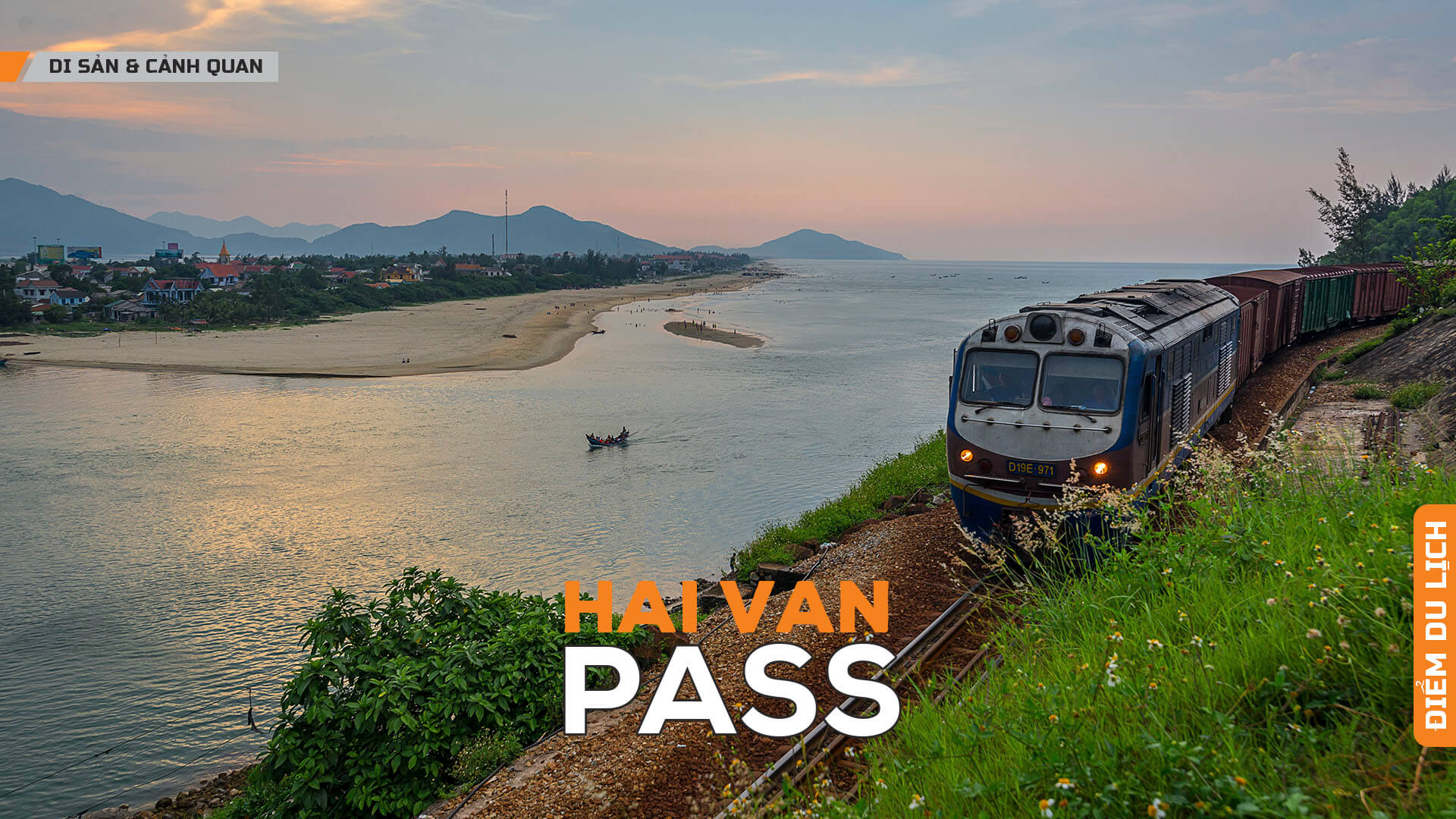
HAI VAN PASS – THE FIRST GRAND GATE UNDER HEAVEN
With an altitude of approximately 500 meters above sea level and a length of about 20–21 km, Hai Van Pass forms a natural geographical and climatic boundary between two regions. The name “Hai Van” means “Sea of Clouds,” originating from the frequent fog and clouds covering the summit of the pass, while below lies the vast blue East Sea. Since ancient times, Hai Van Pass has been hailed as “Thiên hạ đệ nhất hùng quan” – the most majestic gateway under heaven – thanks to its magnificent and rugged landscape. This scenic route was once voted by The Guardian (UK) as one of the most captivating coastal passes in the world, reflected through its winding curves hugging the mountainside and panoramic views of majestic mountains on one side and vast sea on the other.
Historically, Hai Van Pass was the natural boundary between Dai Viet and Champa after King Che Man offered Chau O and Chau Ri as a dowry in 1306. Over the centuries, the pass maintained its vital strategic position. At its summit lies Hai Van Gate – an ancient fort built during the Tran dynasty and expanded under the Nguyen dynasty (in the 7th year of Minh Mang – 1826) to guard the entrance to the imperial capital of Hue. When Emperor Le Thanh Tong stopped here in 1470, he inscribed the six golden words “Thiên hạ đệ nhất hùng quan” on the southern gate, praising the unparalleled majesty of the landscape. Today, Hai Van Gate has been recognized as a National Historic Site by the Ministry of Culture, Sports and Tourism, becoming a symbolic attraction of this historic pass.
HIGHLIGHTS
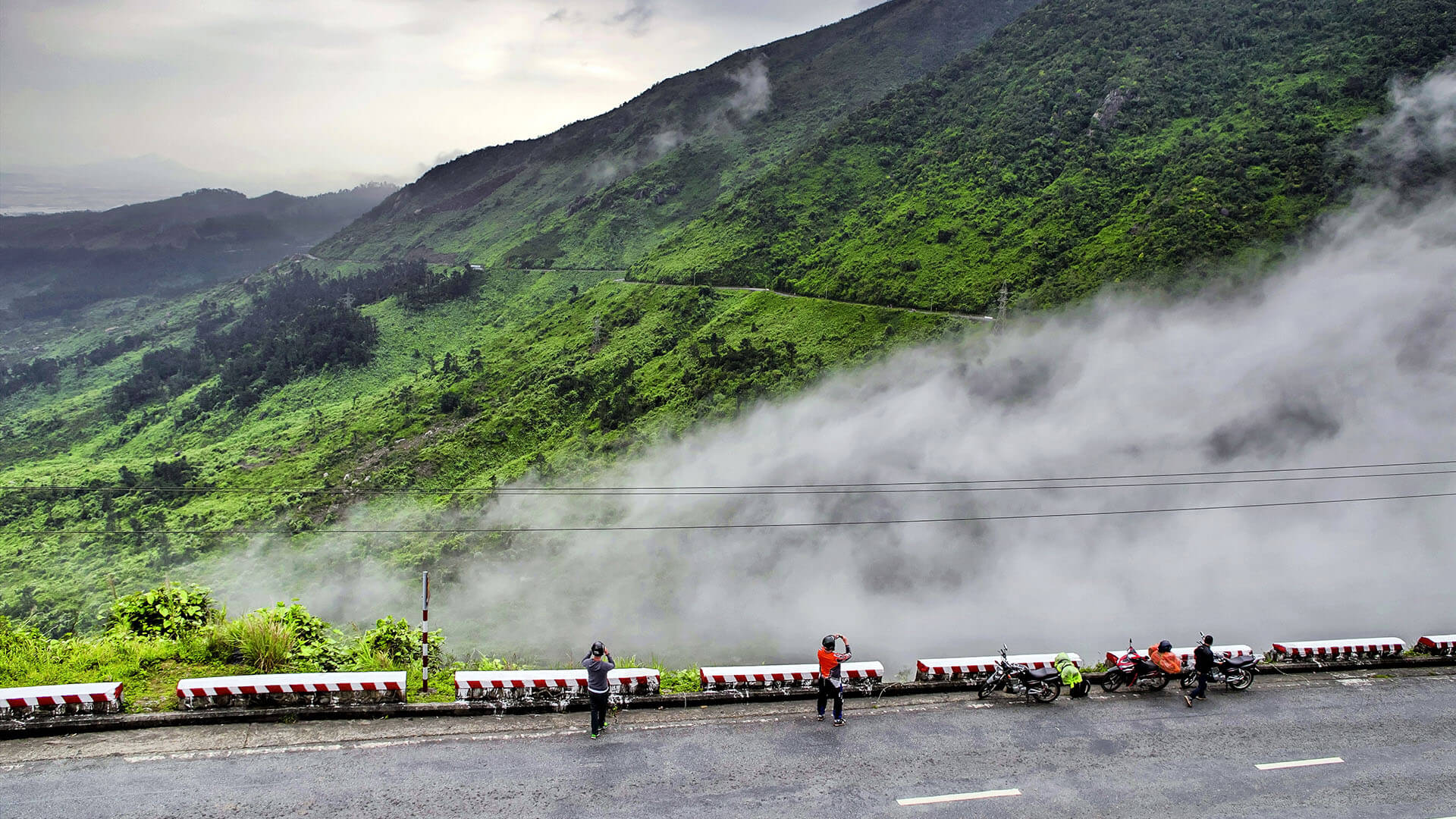
Cung đường đèo Hải Vân uốn lượn giữa lưng chừng mây núi và biển cả, tạo nên cảnh sắc hùng vĩ hiếm có.
Magnificent natural landscape: Hai Van Pass is renowned for the spectacular interplay between mountain forests and the sea. The road resembles a silk ribbon crossing the horizon, with lush green slopes on one side and the endless East Sea on the other. On clear days, visitors from the summit can enjoy panoramic views of Da Nang City to the south with Da Nang Bay, Tien Sa Port, Son Tra Peninsula, and Cham Islands, or look northwards to Lang Co Bay with its curving beaches and tranquil fishing villages by the lagoons. The white clouds drifting mid-slope add to the poetic grandeur of this sublime natural painting – a scenery truly deserving of its immortal title as the “first grand gate under heaven.”
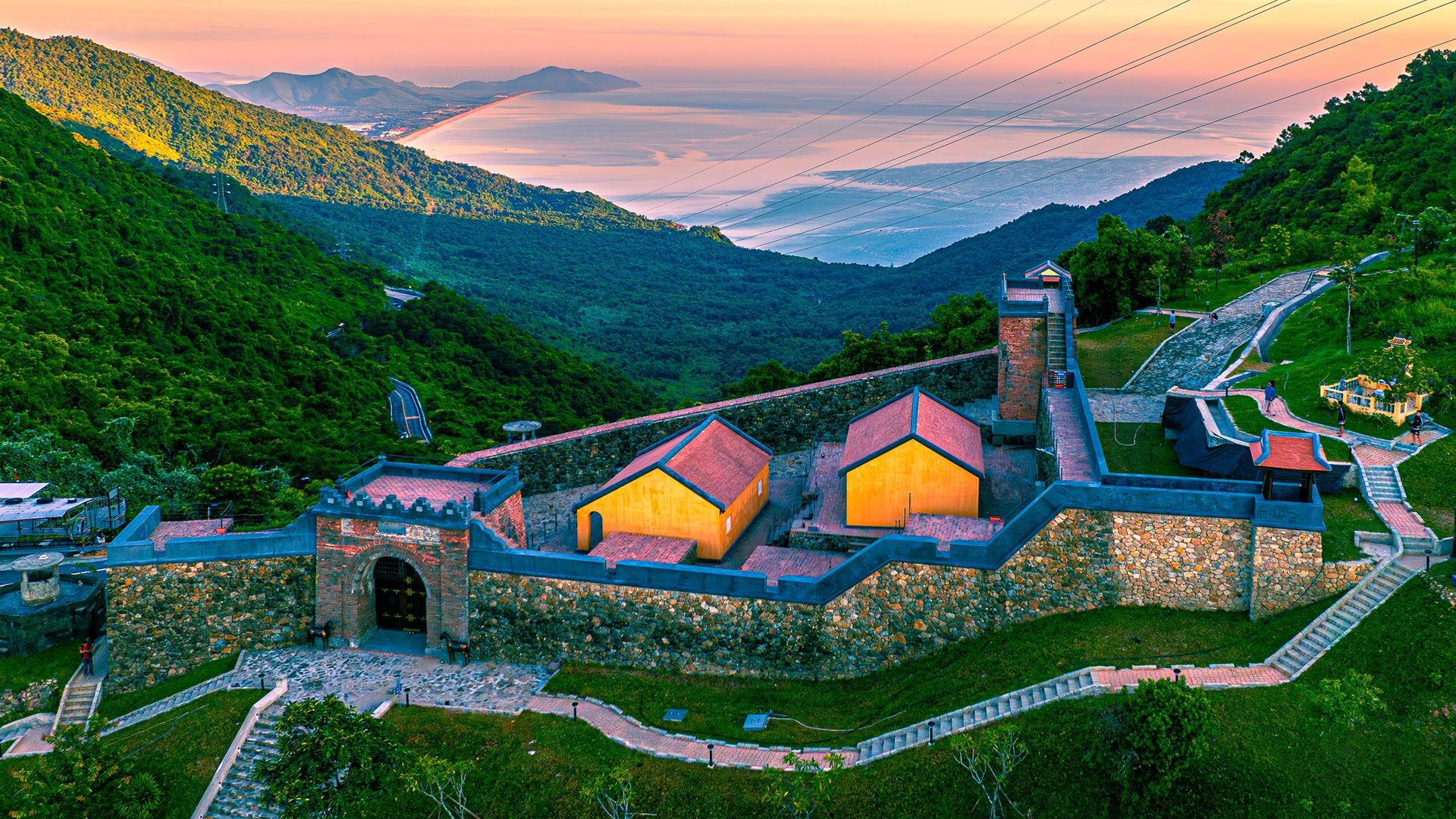
Hai Van Gate – the ancient frontier post atop Hai Van Pass, a historic relic bearing the marks of centuries past. Photo: Kim Lien
Hai Van Gate: Located at nearly 496 m altitude, Hai Van Gate is a historic complex consisting of an ancient citadel gate and defensive forts built during feudal times. The northern gate (facing Hue) reads “Hai Van Quan,” while the southern gate (facing Da Nang) bears the inscription “Thiên hạ đệ nhất hùng quan.” Constructed by Emperor Minh Mang in 1826 on the foundation of a Tran-era fort, the structure aimed to control the arterial North–South route and protect the Hue capital. During the French colonial era and subsequent wars, bunkers and military facilities were added, evidencing the strategic importance of the pass. Restored in 2024, Hai Van Gate now welcomes visitors with renewed grandeur. Standing atop its walls, one can gaze upon the vast forests and sea – especially captivating at sunrise or sunset – making this an unmissable stop on the Hai Van journey.
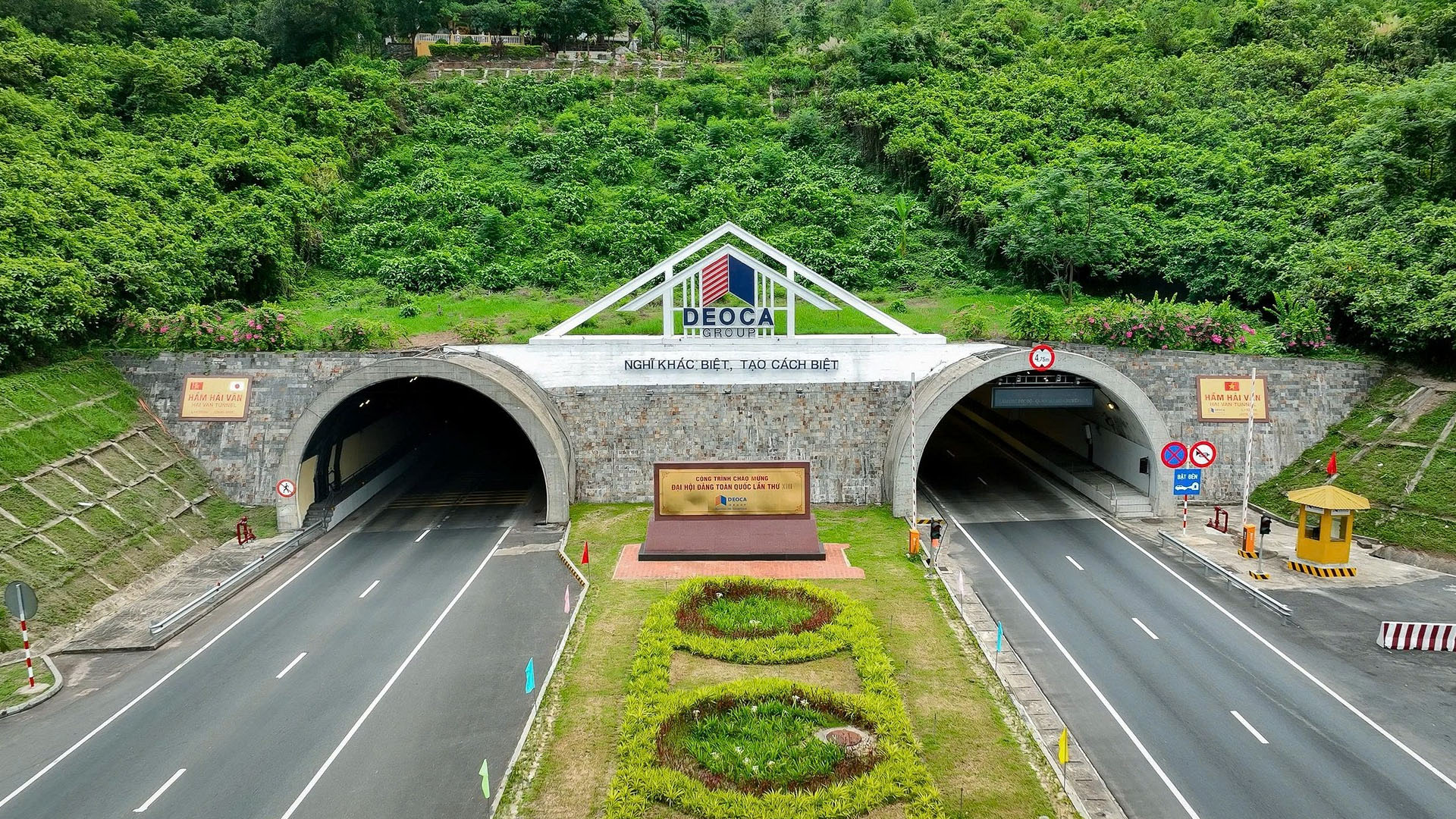
Hai Van Tunnel: Complementing the winding mountain road, the Hai Van Tunnel is a remarkable engineering and transport feat. Stretching about 6.2 km through the mountain (once the longest road tunnel in Southeast Asia), it was inaugurated in 2005 and expanded with a second tunnel in 2021 to shorten travel time and enhance North–South safety. Passing through the tunnel takes only 10 minutes compared to nearly 30 minutes by the mountain pass. However, many travelers still prefer the scenic road to fully experience the breathtaking views and thrill of conquering Hai Van. Note: motorbikes are not allowed inside the tunnel, but shuttle services are available. For cars, travelers should ask drivers to take the pass road instead of the tunnel for sightseeing.
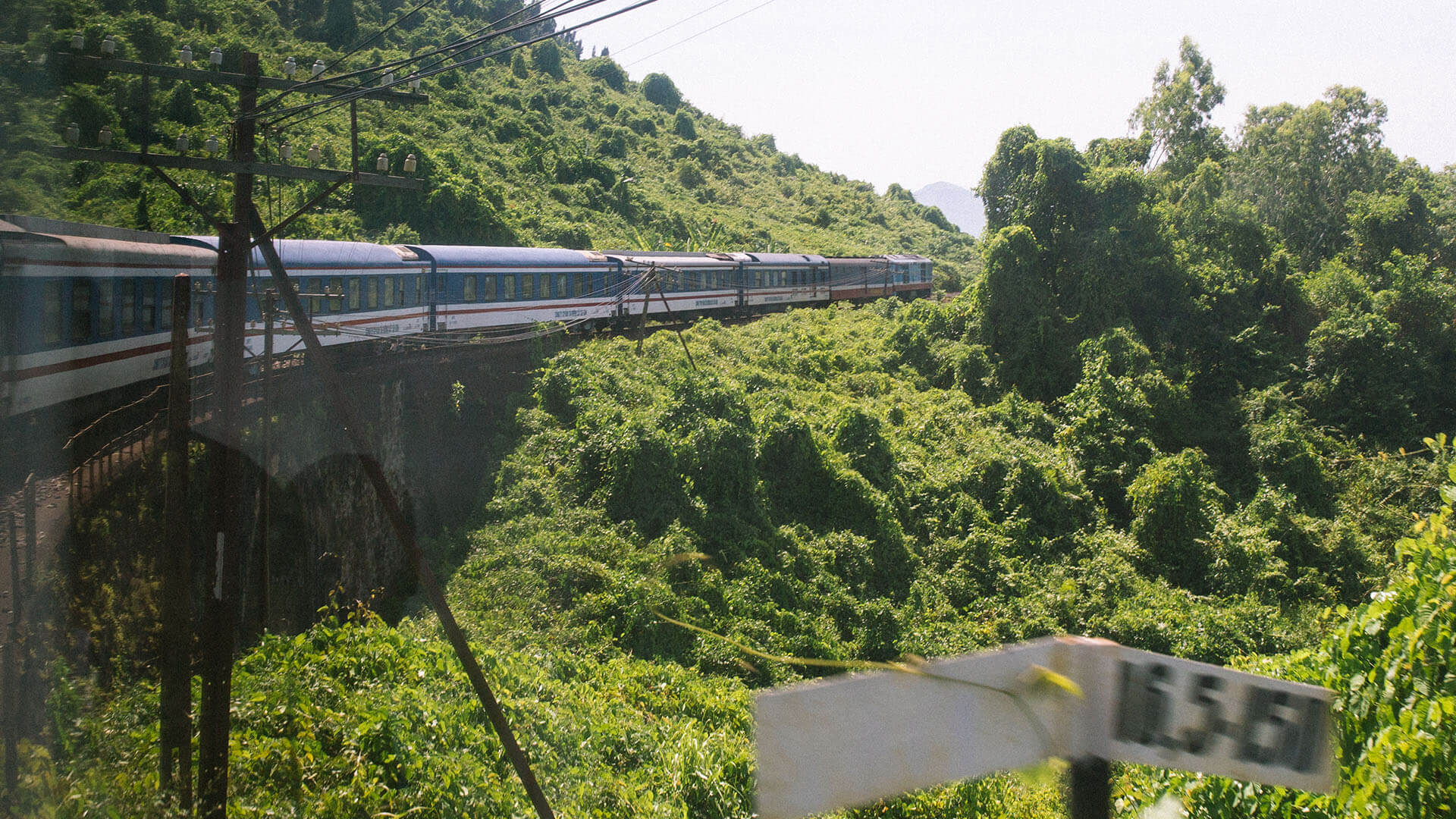
Hai Van railway and Don Ca arch bridge: Before the road tunnel existed, the French built a railway traversing Hai Van in the early 20th century, which remains one of Vietnam’s most scenic railway routes. The train snakes along the mountainside, passing through tunnels and crossing ancient viaducts like the Don Ca arch bridge on the northern slope – a stone bridge built from 1902–1906 with four solid arches spanning a mountain valley amidst streams and wild forests.
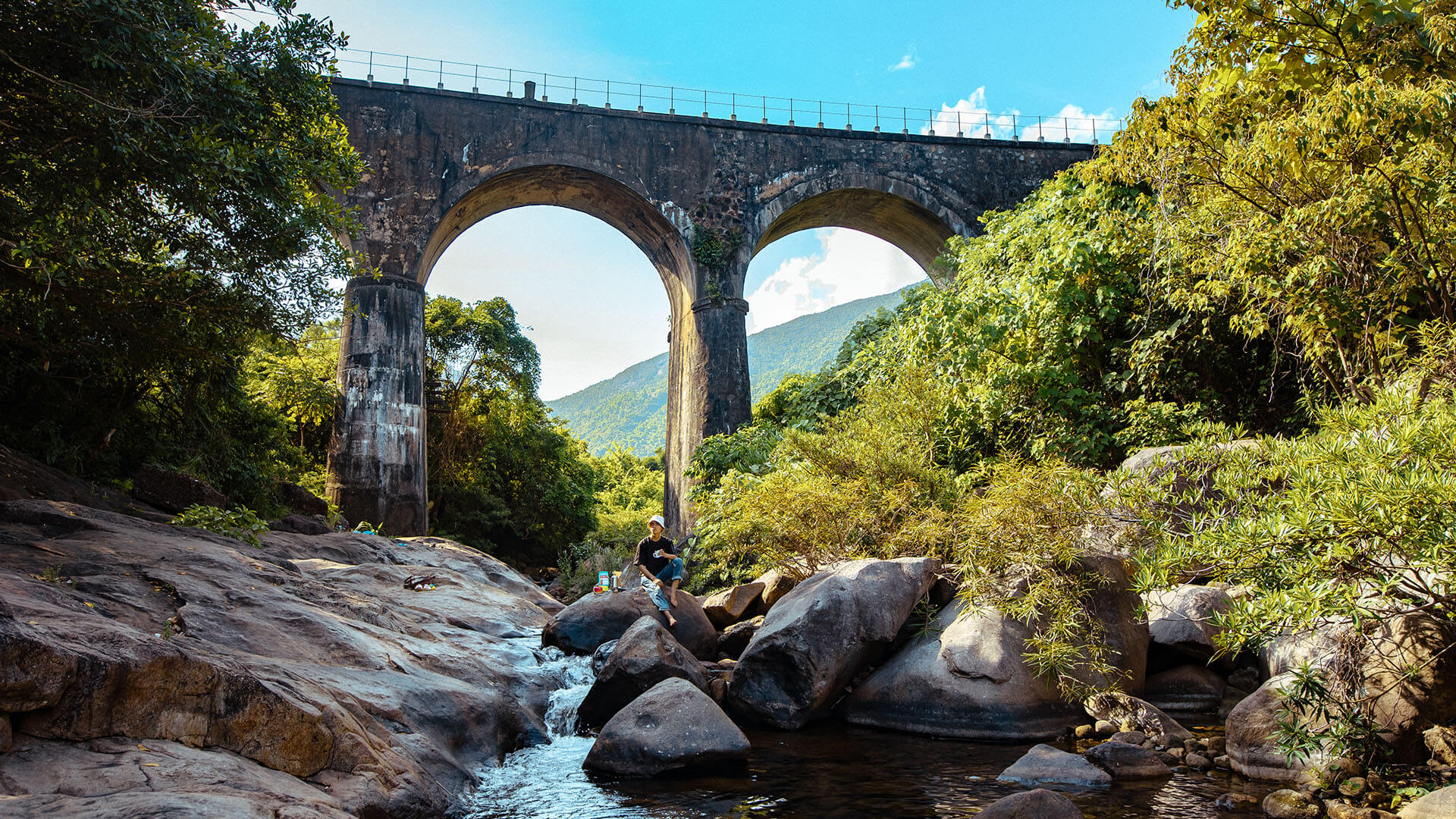
Since 2024, the Vietnam Railways Corporation, Thua Thien Hue Province, and Da Nang City have jointly launched the “Central Heritage Connection” special train service between Hue and Da Nang. This not only facilitates local travel but also offers a unique experience for tourists visiting two of the country’s most iconic cities – one ancient, one modern.
Two pairs of daily trains operate:
- From Hue: HĐ1 departs Hue at 7:45 AM, arriving Da Nang at 10:35 AM; HĐ3 departs at 2:25 PM, arriving Da Nang at 5:40 PM.
- From Da Nang: HĐ2 departs Da Nang at 7:50 AM, arriving Hue at 11:05 AM; HĐ4 departs at 3:00 PM, arriving Hue at 5:45 PM.
Scenic viewpoints and stops: Along the pass are many ideal stops for sightseeing and photography. On the Da Nang side, the first curve up the pass offers the Turtle Rock outcrop with stunning views of Da Nang Bay and Son Tra Peninsula. From roadside cafés or rest stops, travelers can admire Lang Co Bay and Lap An Lagoon, especially beautiful on sunny days. Each stop offers a unique impression – awe at the majestic nature, or contemplation of the enduring historic traces.
TRANSPORTATION
Hai Van Pass lies on National Route 1A – the North–South arterial highway. Visitors can choose various modes of transportation from Da Nang or Hue (or transit from other major cities).
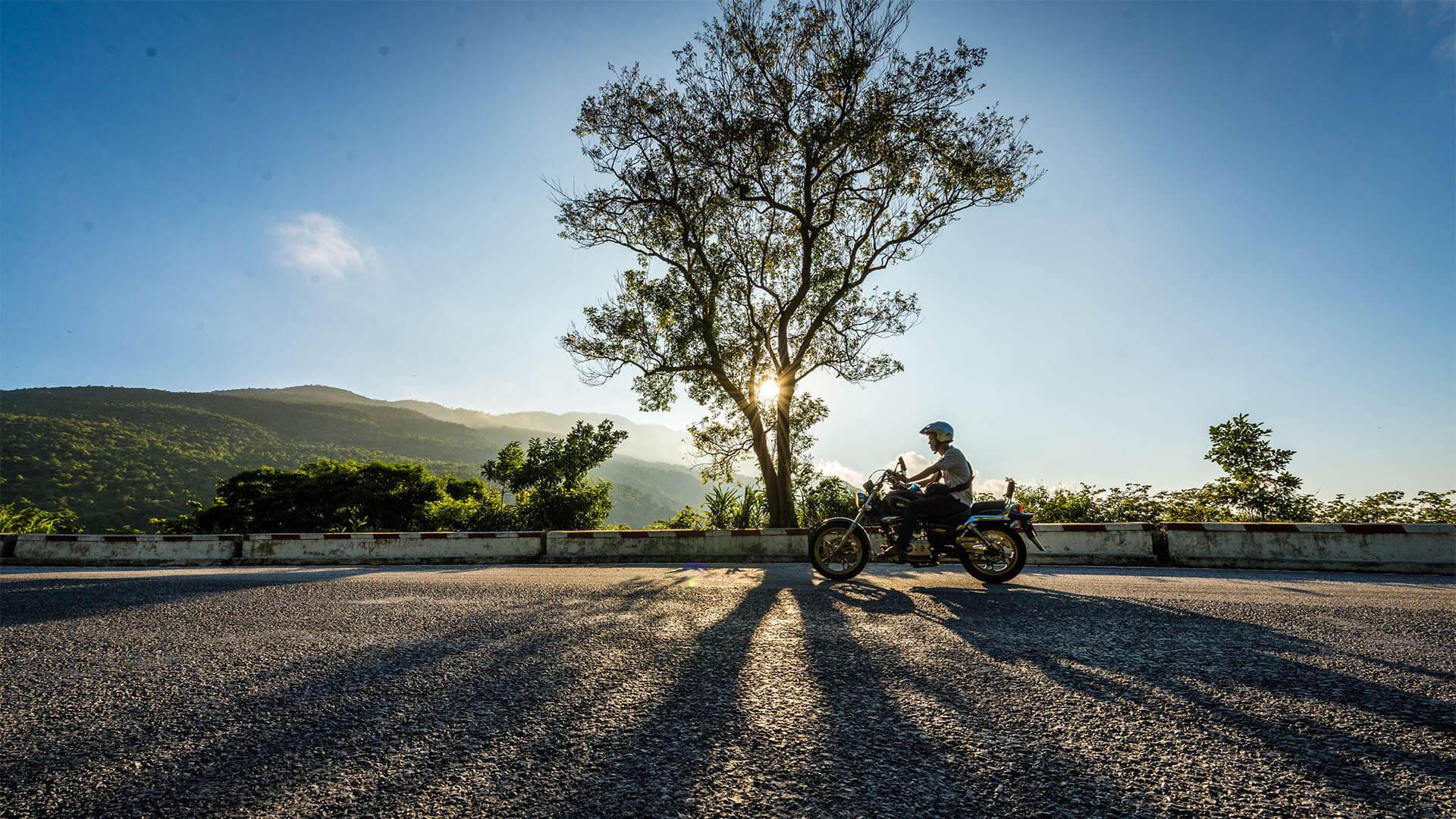
Motorbike or scooter: A favorite choice for adventurous travelers seeking freedom and nature. From central Da Nang, head north along National Route 1A for about 20 km to reach the pass. The 20 km ascent takes 45–60 minutes depending on speed and stops. From Hue (80 km), follow National Route 1A south, pass through Lang Co town, and ascend from the northern side. Note: the road is winding and steep – check your vehicle carefully, fuel up, and avoid traveling at night or in thick fog for safety. Those unfamiliar with mountain driving can hire a driver or join guided motorbike tours.
Private car or taxi: A time-saving and family-friendly option. From Da Nang, it takes about 30 minutes to reach the summit; from Hue, about 1.5 hours. Most interprovincial buses use the tunnel for speed, but for a full experience, request the scenic pass route in advance. Cars are convenient and weather-protected, though less flexible for scenic stops than motorbikes.
Train: A safe and scenic option for those with time. Book tickets in advance, especially in peak seasons. Choose right-side seats (from Da Nang) or left-side seats (from Hue) for ocean views.
COST AND TICKETS
One of the most appealing aspects of Hai Van Pass is its free access to majestic natural beauty. Apart from transportation, visitors may budget for local cuisine. Near the Da Nang side is the famous Nam O Raw Fish Salad; on the Lang Co – Hue side, fresh seafood is a highlight, or stop at roadside cafés for refreshments and views.
SUGGESTED ITINERARY
- Ideal time to visit: Hai Van Pass is accessible year-round, but best during the dry season (March–August) with stable weather and clear visibility. Rainy season (September–December) can make the road slippery and foggy. Ideal times are early morning or late afternoon: departing at 6–7 AM offers a fresh sunrise view; alternatively, 3–4 PM trips allow sunset viewing before returning at dusk. Avoid hot midday hours in summer for a more pleasant experience.
- Other notes: Always check weather forecasts, avoid traveling during storms. Ride carefully, maintain proper speed, use low gear downhill, and stay alert for sharp curves. Bring a light jacket for the cool breezy summit, especially at dawn. Don’t forget a camera or charged phone to capture unforgettable moments at this “first grand gate under heaven.” With its majestic beauty and heroic history, Hai Van Pass is sure to leave a deep impression on every traveler.
DANANG CENTER FOR TOURISM PROMOTION

